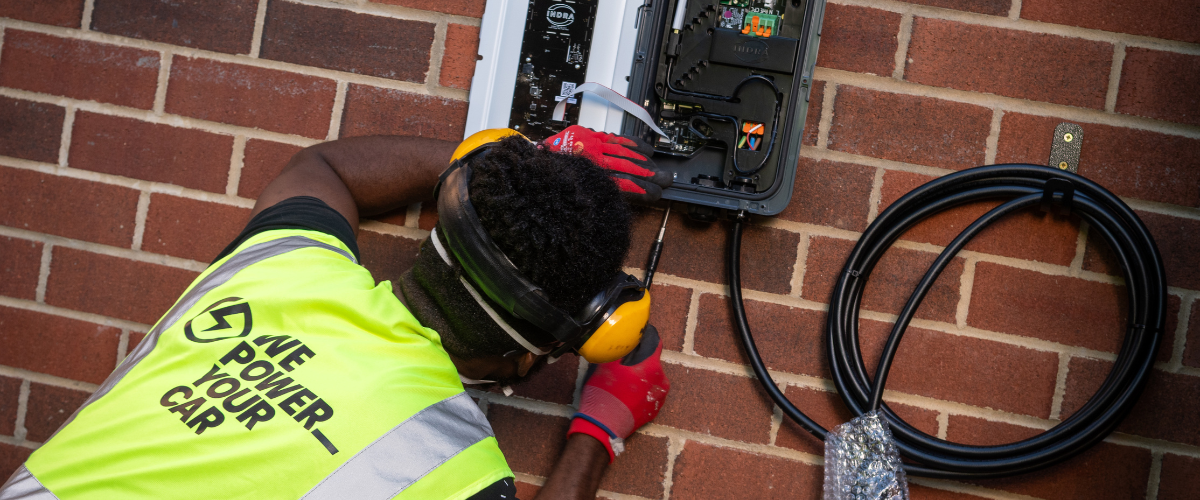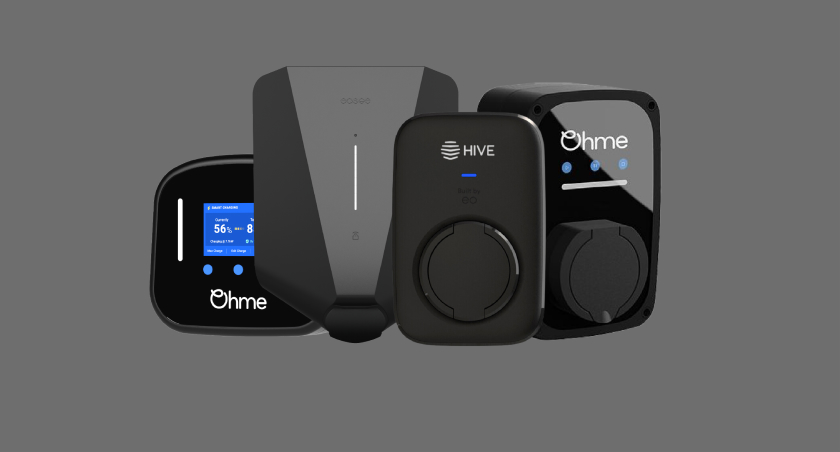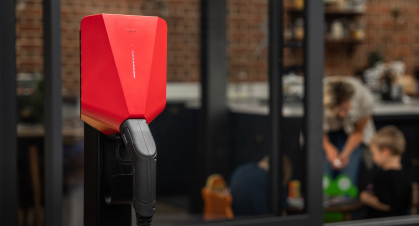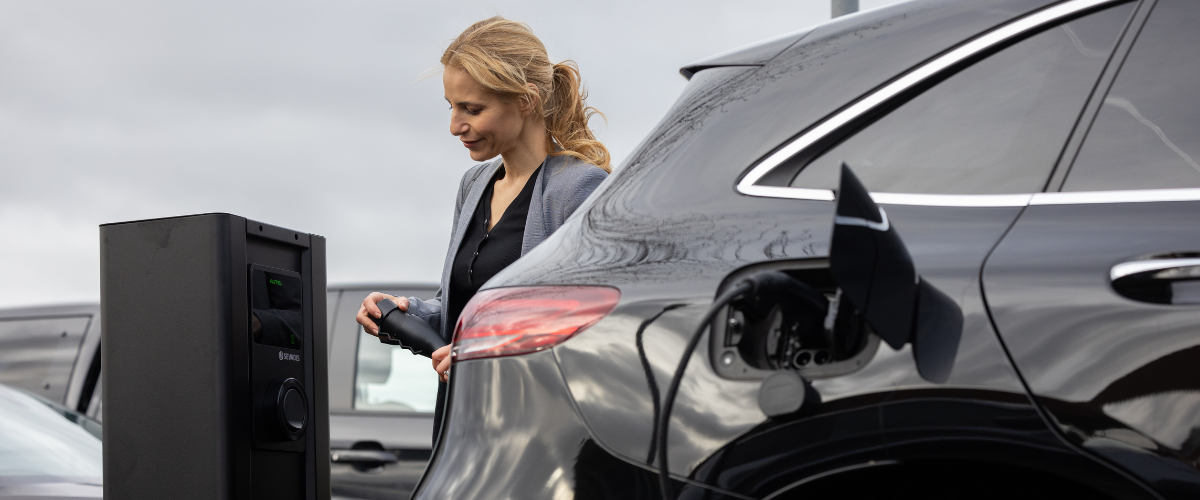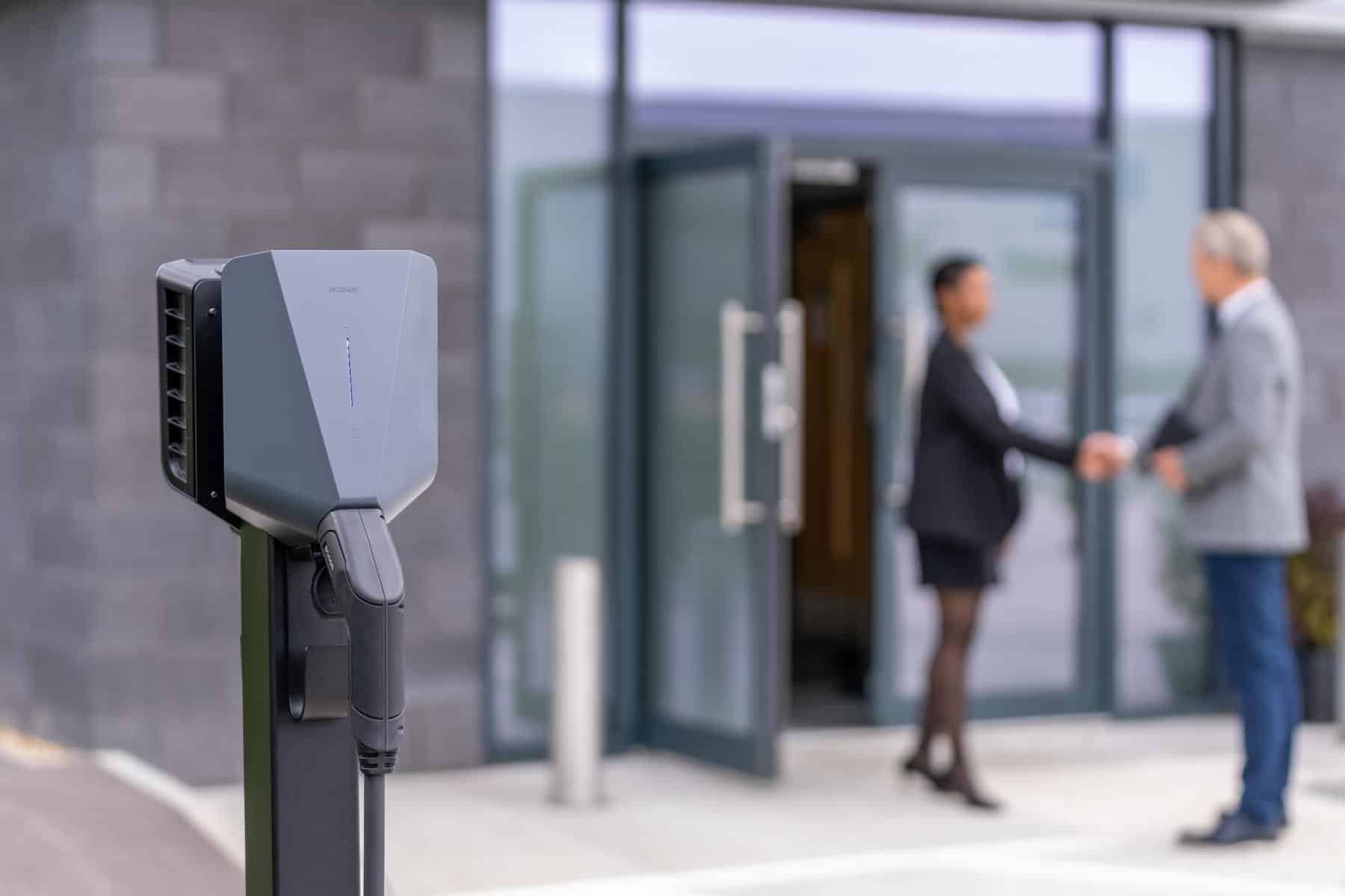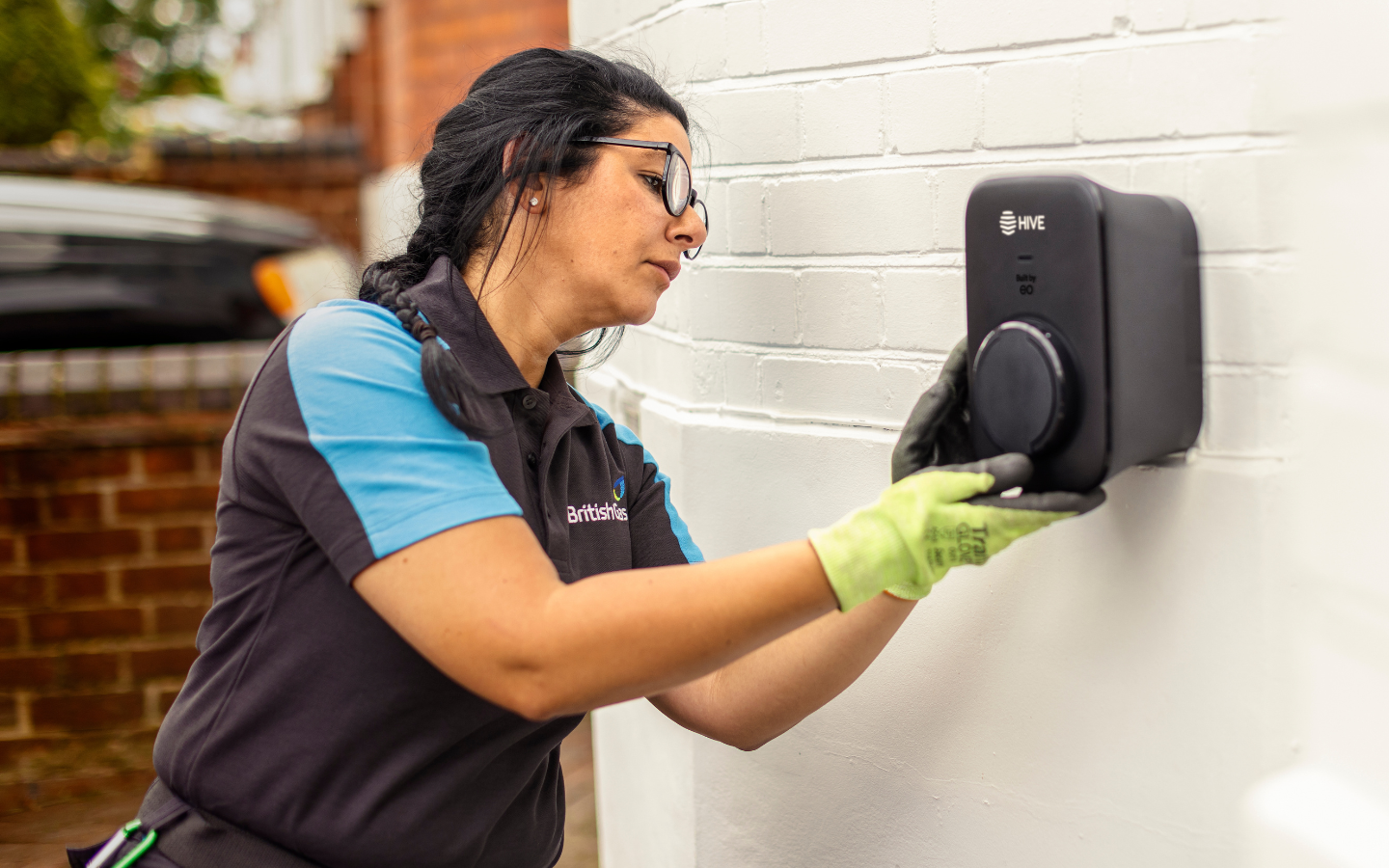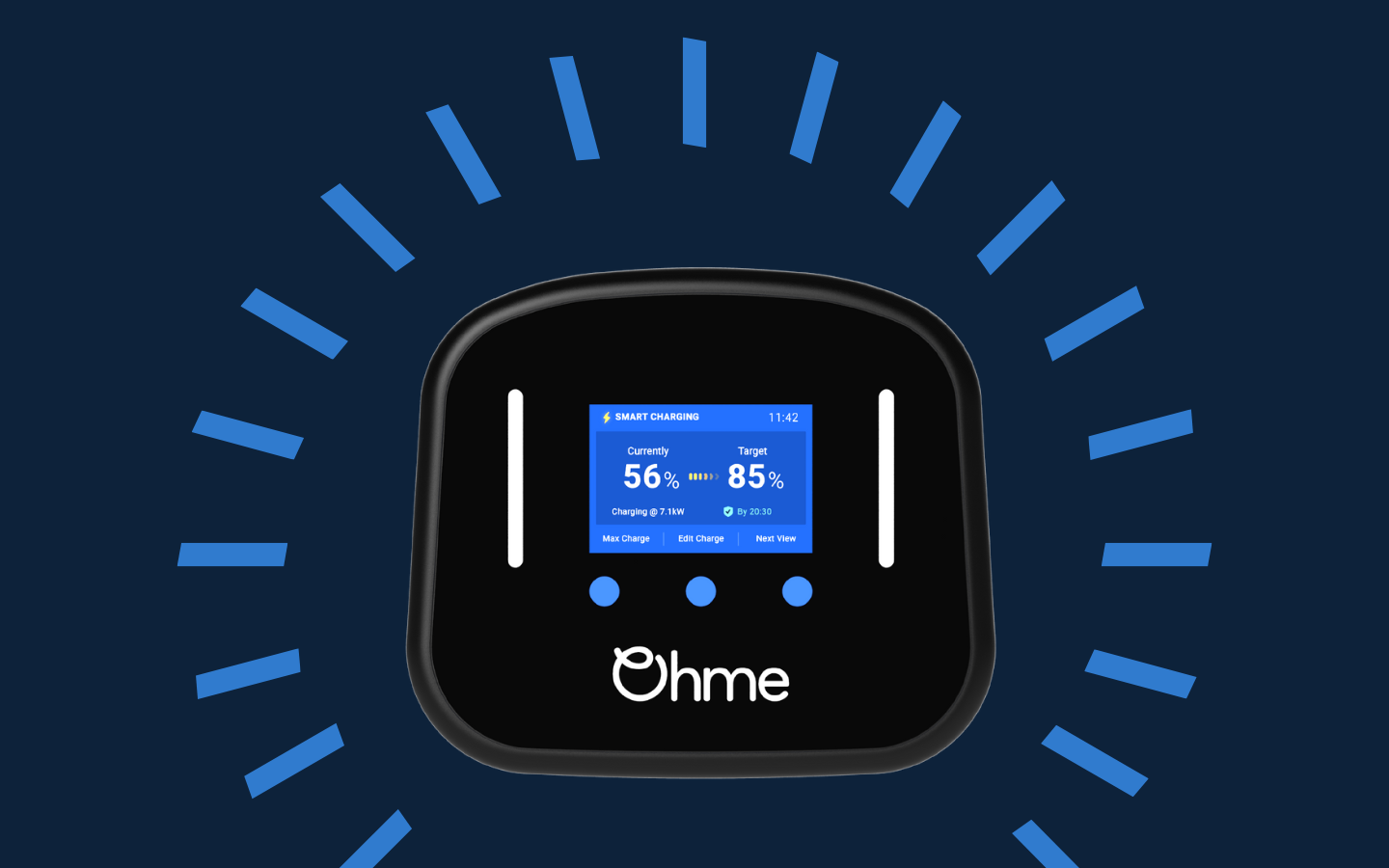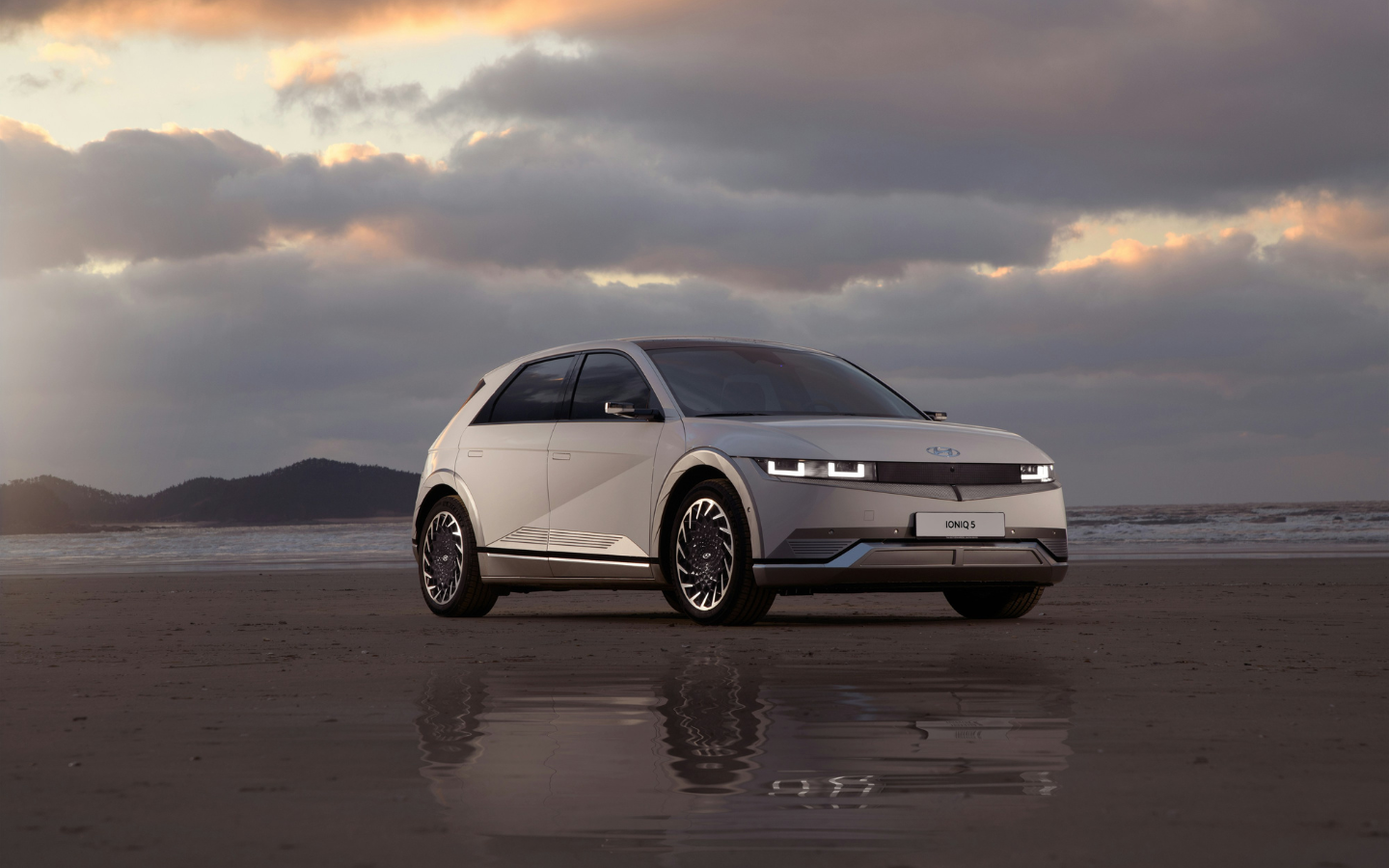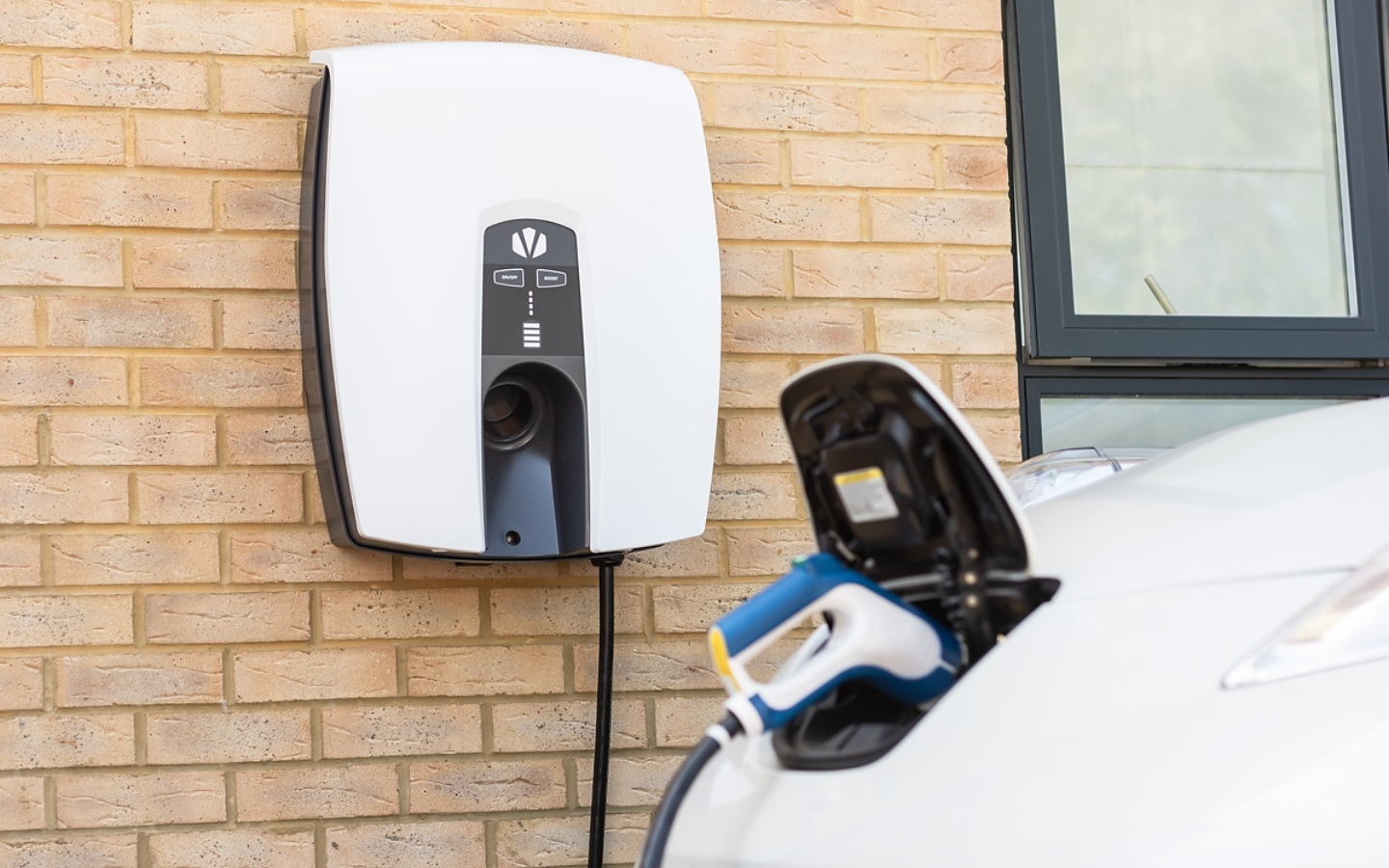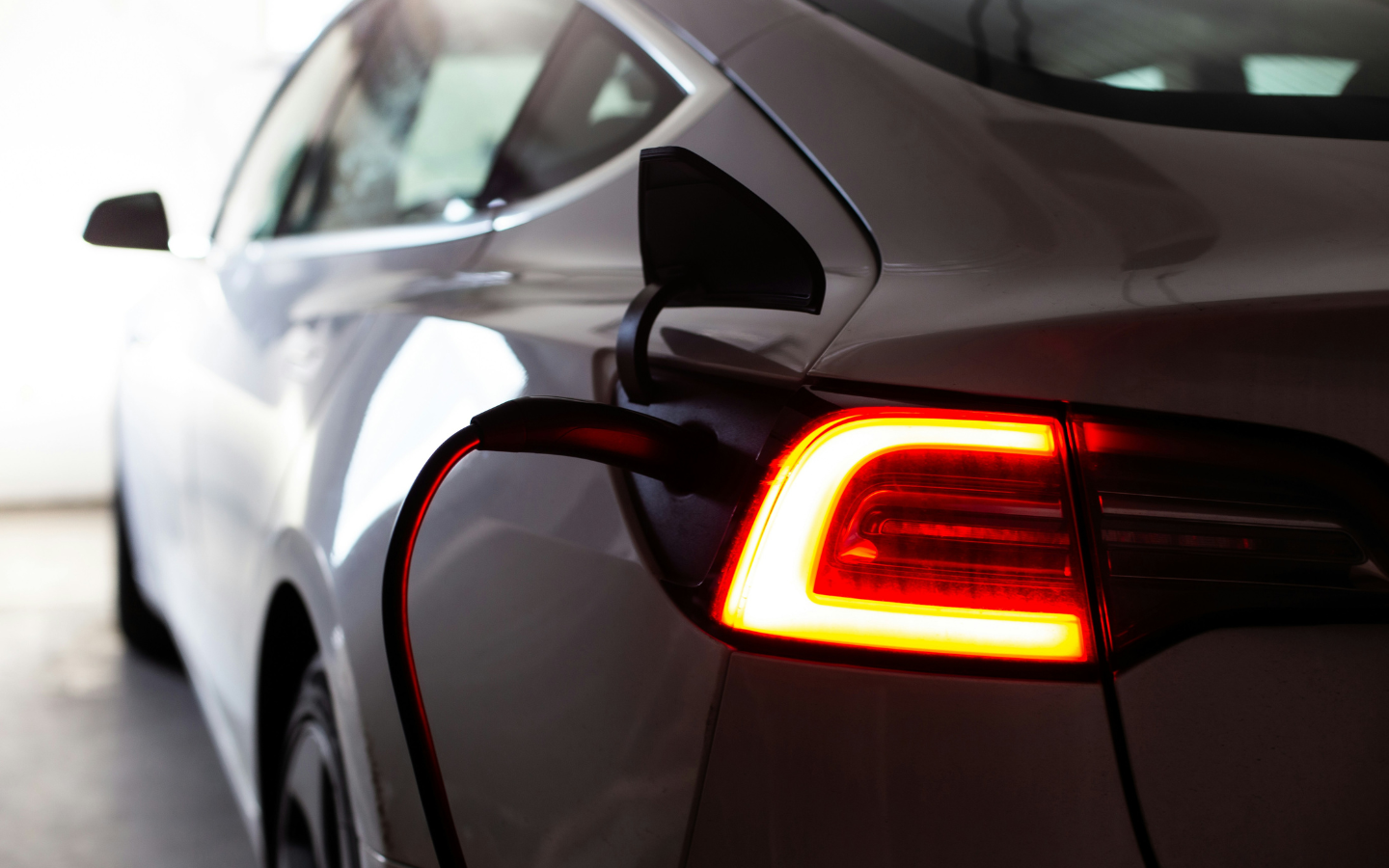

Electric Vehicle Glossary
A
Alternating Current (AC)
Alternating current (AC) is a form of electric current. To store energy in an electric vehicle (EV) battery, AC must be converted to direct current (DC). A converter in the car facilitates this conversion, enabling storage in the battery. Being reliant on this conversion process, AC charging is slower than DC charging.
Learn more about alternating current (AC).
Amps
Amperes, often abbreviated as “amps” is the unit of electric current. In EV charging, the charger’s amperage determines how quickly it supplies power to the vehicle’s battery. Amperage rates for electric car charging vary based on the charger type. Home chargers typically range from 16 to 32 amps, with higher amperage resulting in faster charging.
Alternative Fuel Vehicle (AFV)
An alternative fuel vehicle (AFV) is any vehicle not powered by conventional diesel or petrol. Common options include hybrids, plug-in hybrids, and electric cars.
B
Battery chemistry
Battery chemistry describes the materials used to make up the battery cells that power an electric vehicle motor. Although electric vehicle technology has become synonymous with Lithium-ion batteries, it is actually only one of a range of battery chemistries used to power vehicles. Alternative chemistries such as Lithium Iron Phosphate (LFP), Lithium Nickel, Manganese Cobalt Oxide (NMC), Nickel Cobalt Aluminium (NCA) and Lithium Sulphur batteries are being extensively researched.
Battery Electric Vehicle (BEV)
A battery electric vehicle or ‘BEV’ is a fully electric vehicle with a rechargeable battery and no internal combustion engine. It runs entirely on electricity, not petrol or diesel. These vehicles are charged by an external electricity supply, such as plugging into an EV charge point.
Battery health checks
Battery health checks are seen as a key factor in giving the public confidence in used electric vehicle batteries. Fears about battery degradation and loss of range are seen as a barrier to entry. Still, a number of companies are developing different technologies to provide insights into the health of a vehicle’s battery to help consumers make more informed choices.
Benefit in Kind (BIK)
Benefit in kind (BIK) refers to perks provided by employers to employees that are separate from their salary. Some BIK perks are tax-free, while others incur taxes. Often termed company car tax, employees using a company car for personal use pay BIK tax from their monthly wage. The BIK rate for zero and low-emission vehicles is currently 2%, fixed until April 2025. This rate is significantly lower than the rates for petrol and diesel vehicles.
Learn more about electric vehicle benefit in kind (BIK).
Battery Capacity
Battery capacity, measured in kilowatt-hours (kWh), represents the energy contained in an electric vehicle’s battery pack. It indicates how many miles you can drive on a full charge. Higher kWh means greater driving range on a single charge. Think of it as the gas tank size of a gasoline-powered vehicle.
Battery Management System (BMS)
A Battery Management System (BMS) manages the electronics of a rechargeable battery in an electric vehicle. A BMS is crucial in ensuring electric vehicle safety as it protects the battery from misuse and damage, prolongs battery life and ensures that the battery is always ready for use. As the battery is the most expensive component of an electric vehicle, the role of the BMS is pivotal.
C
Charging Rate
An electric vehicle’s charging rate, usually measured in kilowatts (kW), indicates how fast its battery can charge. Different cars have different maximum charging rates. For example, some max out at 7kW, so using a more powerful 22kW charger won’t speed up the process.
Likewise, a charger’s charging rate refers to its maximum power output for charging a vehicle’s battery, measured in kW. This rate varies depending on the charger type. For example, a 60kW rapid charger charges faster than a 7kW one.
Combined Charging System (CCS)
Combined Charging System (CCS) is a rapid-charging connector type. It is designed for direct current (DC) rapid charging at public locations, not alternating current (AC) home charging. If your electric vehicle is a European or North American model, it probably has a CCS socket.
Charging Point
A charging point is a device that uses electricity from an electric grid to charge electric vehicles and plug-in hybrids. You’ll find charging points at home, in public spaces, or workplaces. They are often referred to as EV chargers, electric car chargers, EV charging stations, or electric vehicle supply equipment (EVSE).
Connector Type
Electric cars use a cable with connectors on each end to charge: one for the car and the other for the charge point. Various connector types accommodate different vehicles and charging methods. CCS or CHAdeMO connectors are common for rapid and ultra-rapid chargers, while fast chargers typically use type 1 or type 2 connectors. Ensure compatibility by matching your connector type with your vehicle’s socket, as connector preferences may vary by country.
CHAdeMo
CHAdeMO was the original rapid-charging connector type for electric vehicles and plug-in hybrids, originating in Japan. But, in the UK, only a few EV models still utilise this connector type, as European carmakers favour Combined Charging System (CCS). CHAdeMO charging is capable of handling charge rates of over 400kW.
Cost Per kWh
Electricity usage is measured in kilowatt-hours (kWh). The cost of charging an electric car at home fluctuates depending on the current cost per kWh. Think of it like calculating the cost of a litre of petrol or diesel. To determine the charging costs of an electric car, multiply the electricity cost per unit (kWh) by the model’s battery capacity in kW.
Charge Point Operator (CPO)
A Charge Point Operator (CPO) is an organisation responsible for installing, managing and maintaining electric vehicle (EV) charging infrastructure.
Connector
A connector is the part of a charging cable that links one end to the electric vehicle’s charging port and the other end to a charging point. A connector can also be referred to as a ‘plug head’.
Charging
Charging refers to the process of replenishing an electric vehicle’s battery with electrical energy from an external power source, such as a charging point.
Charge Scheduling
Charge scheduling allows you to plan your home charging to a more convenient time of the day. You can remotely schedule a charge using your home charger’s smartphone app. With this feature, you can choose the exact time you want your vehicle to start and stop charging.
Clean Air Zone (CAZ)
A Clean Air Zone (CAZ) is a designated area within a city or town where certain vehicles must meet specific emission standards to enter. Non-compliant vehicles are subject to a daily charge. This charge incentivises owners to upgrade to compliant vehicles. CAZs are usually situated in areas with significant air quality issues. The goal is to decrease vehicle pollution and encourage greener transportation options like public transport and low or zero-emission vehicles.
Charging Cable
A charging cable is used to charge an electric vehicle, connecting one end to the car and the other to a charging point. It consists of three parts: a connector for the car, a length of wire, and another connector for a charging point. Available in various sizes, like 5 or 10 meters, one is typically provided with your electric vehicle. Charging cables can also be permanently attached to a charging point, referred to as being ‘tethered’ to the charger.
Congestion Charge
The London Congestion Charge zone is an area in London where driving incurs a charge unless eligible for a discount. Managed by Transport for London (TfL), it aims to decrease city centre traffic and air pollution while aiding London’s shift to carbon neutrality by 2030. Vehicles failing emission standards pay a fee upon entry. Battery electric vehicles (BEVs) are currently exempt. But, starting December 2025, all electric vehicles must pay unless qualifying for an alternative discount.
Learn more about the Congestion Charge.
Current Transformer (CT Clamp)
A CT Clamp is a current transformer that clamps around a cable to monitor the load (amps) in your house. It serves as a safety measure by reducing the charge rate on your charger if it detects a load nearing the house’s maximum capacity, preventing blown fuses.
Also, with a CT clamp, you can use solar features if your EV charger supports them. This is possible because the CT clamp detects the energy exported to the grid from solar panels, allowing you to use excess solar energy to charge your car for free instead of exporting it.
D
Direct Current (DC)
Direct current (DC) is a type of electric current that can directly charge a battery without needing conversion, unlike Alternating Current (AC). This feature enables faster charging speeds, making DC energy the choice for rapid and ultra-rapid charging.
Learn more about direct current (DC).
Destination Charging
Destination charging is the process of charging your electric car while spending time at locations and attractions. Destination charge points are typically located in areas that are considered the final destination of a driver’s trip, such as supermarkets, restaurants and hotels.
Degradation
Degradation refers to the gradual decline in an electric vehicle battery’s efficiency, leading to reduced energy capacity, range, and power over time. Although it typically takes many years, preventive measures are available to minimise battery degradation.
Learn more about how to minimise battery degradation.
Distribution Network Operator (DNO)
A Distribution Network Operator (DNO) distributes electricity from the national grid to homes and businesses in their area. They also manage infrastructure such as towers, transformers, poles, cables, and meters. Before installing an EV charger, approval from the DNO in your area is required.
Learn more about the Distribution Network Operator (DNO).
Dual Charging
Some EV chargers offer dual charging, allowing you to charge two vehicles simultaneously from a single charging unit.
E
Economy 7
Economy 7 is a special energy tariff with two different daily prices: a standard rate and a cheaper rate for a 7-hour overnight period. This allows you to pay less for energy used at night and more for daytime usage. Utilising this tariff can benefit EV owners, as charging overnight at a cheaper rate can result in cost savings.
Earth Bonding
Earth bonding involves connecting all metallic objects, like metal gas and water pipes, in a property to an ‘electrical earth’ system. This process ensures that electricity can safely flow back into the ground if there’s an unusual current. In simpler terms, it prevents electric shocks by ensuring metallic objects don’t become ‘live’ due to faults in electrical appliances. Water and gas bonding in your property is necessary for a safe EV charger installation, except when the supply pipes are plastic.
Learn more about earth bonding.
Electric Vehicle Service Provider (ESVP)
Electric Vehicle Service Providers (EVSPs) are organisations that offer comprehensive EV charging services. They manage charging station operations and aim to enhance the overall experience for EV drivers.
Electric Vehicle (EV)
An electric vehicle (EV) is powered by electricity and an electric motor instead of a gasoline (petrol) or diesel engine.
EV Charger
An electric vehicle (EV) charger is a device designed to supply electrical energy to recharge the batteries of an electric vehicle. They can also be called electric car chargers, charging stations, charging points or electric vehicle supply equipment (EVSE).
EV Tariff
An electric vehicle (EV) tariff is an energy tariff tailored for EV owners to charge their cars at home cost-effectively. These tariffs typically feature lower rates per unit of electricity used at night, like domestic Economy 7 tariffs. The aim is for EV owners to charge overnight at these reduced rates, thereby paying less for electricity and lowering the cost of charging their vehicles at home.
Learn more about the best EV tariffs.
Electric Vehicle Supply Equipment (EVSE)
EVSE, short for Electric Vehicle Supply Equipment, is the infrastructure that enables the charging of electric vehicle batteries. It includes charging points, software, conductors and communication protocols for safe, efficient energy delivery. Electric Vehicle Supply Equipment is the industry’s technical term. However, they are also known as charging points, charging stations, EV chargers, and electric car chargers.
e-Mobility
Electromobility, also known as E-Mobility, involves the use of electrically powered vehicles. These vehicles may include electric cars, e-bikes, or electric buses. It also consists of the infrastructure needed to charge the batteries of these vehicles.
Earth Rod
An earth rod, also called an earth electrode, is usually made of copper or steel and is placed in the ground and connected to an EV charger. This setup protects electrical equipment by providing a path for stray currents to the ground. It helps avoid electric shocks and hazards. However, many new EV chargers have built-in PEN fault protection, which removes the need for a separate earth rod, as it offers the same protection.
F
Fast Charging
Fast charging involves charging an electric vehicle using a charger rated between 7kW and 22kW, using AC power. These chargers are typically found at home or in public places like supermarkets. Fast charging can also be referred to as Level 2 charging.
Learn more about fast charging.
Fuse Upgrade
A fuse regulates the power flow into your home, ensuring it’s safe. When installing an EV charger, an upgrade to the fuse is often necessary to handle the increased energy demand. Your distribution network operator (DNO) handles this upgrade.
G
Granny Charger
A granny charger, also known as a three-pin plug charger, is a portable electric car charger. One end plugs into a domestic socket, and the other connects to the electric vehicle. It’s the slowest charging option and typically comes with your electric car. It’s handy for emergencies when you can’t access a dedicated home or public charger.
Learn more about granny chargers.
Grant
A grant is money the government provides to individuals or organisations for specific purposes. In the context of electric vehicles, grants are available to assist with the cost of installing charge points at homes or commercial properties.
Learn more about the different electric vehicle grants currently available.
H
Hybrid Electric Vehicle (HEV)
A hybrid electric vehicle (HEV) is powered by both an electric motor and a petrol or diesel internal combustion engine. HEVs cannot be plugged in for charging. Instead, the battery self-charges through regenerative braking or the internal combustion engine. They operate on electric power at low speeds, switching to the internal combustion engine as speed increases.
Home Charging
Home charging is when you recharge your electric vehicle at home. You can use either a dedicated home charger wired into your domestic electricity supply or a granny charger plugged into a domestic socket. A granny charger typically charges at 2.3kW, while a dedicated home charger ranges from 3.6kW to 22kW, both utilising AC power.
Hybrid
A hybrid vehicle combines an engine with an electric motor. It uses both fuel and electricity to power the car. This makes it more efficient and reduces fuel use compared to conventional vehicles.
I
Internal Combustion Engine Vehicle (ICEV)
An internal combustion engine vehicle (ICEV) is powered by a traditional internal combustion engine (ICE), running on petrol or diesel fuel.
Inverter
An inverter in an electric vehicle converts DC (direct current) power to the AC (alternating current) power used by the vehicle’s motor. It’s a critical component, providing power for the drivetrain and other high-demand functions.
J
Journey planning
Journey planning means planning your route with your electric vehicle’s battery charge in mind. This includes ensuring a full charge before departure and mapping routes with charging stations along the way. Navigation apps and satnavs often integrate charging stops into their route planners.
K
Kilowatt (kW)
A kilowatt (kW) equals 1000 watts (W) and is a unit of power. Electrical appliances are typically rated in kilowatts, representing the energy needed for operation. EV chargers are also rated in kW. A higher kW rating means the charger can deliver more power, resulting in faster charging for electric vehicles. For instance, a 7kW charger charges faster than a 3.6kW charger.
Learn more about kilowatts for electric cars.
Kilowatt-hour (kWh)
A kilowatt-hour (kWh) measures an appliance’s energy use over time. In electric vehicles, it represents the battery’s capacity, indicating how much energy the vehicle can store in its battery. Electric car batteries are typically measured in kWh. For instance, the Nissan Leaf has a battery capacity of 40 kWh.
Learn more about kilowatt-hours for electric vehicles.
L
Lithium Ion
Most electric vehicles (EVs) use lithium-ion batteries for their motors. These batteries store energy for movement. Compared to lead-acid batteries, lithium-ion ones are lighter, more energy-dense, and last longer. An EV’s lithium-ion battery is not a single unit. Instead, it is made up of many stacked cells. The more cells, the higher the battery’s capacity, measured in kilowatt-hours (kWh).
Load Management
Load management is a safety feature in chargers that regulates the energy provided to a vehicle. It monitors your home’s total electrical load and adjusts the power drawn by the EV charger to ensure efficient allocation of available power. For instance, if many appliances run simultaneously, it may pause or reduce the charging process to prevent overloading and potential fuse blowouts.
Level 1, 2, and 3 Charging
Electric vehicle charging is categorised into three levels: 1, 2, and 3, each offering progressively faster charging speeds.
Level 1 charging, considered “slow charging,” utilises a granny charger (rated at 2.3kW) or a home charger (rated at 3.6kW), operating on alternating current (AC).
Level 2 charging, often used for daily charging, is available at homes, workplaces, and public areas like supermarkets. These chargers, rated from 7kW to 22kW, are termed “fast charging” and operate on alternating current (AC).
Level 3 charging, known as rapid charging, uses direct current (DC) power and is typically found in public locations like motorway services. These chargers, rated upwards of 43 kW, cannot be installed at home.
Looped Supply
A looped supply is when two properties share a single electricity service cable, often found in terraced or semi-detached homes. Inspect your electricity meter box for two service cables entering the meter to check if you have a looped supply. If identified, inform your EV charger installer, who will notify your distribution network operator (DNO) before installation. This allows them to disconnect each meter connected to the shared loop, as EV chargers are typically not permitted on looped supplies.
Learn more about looped supplies.
M
Motability
The Motability Scheme provides an affordable leasing option for disabled individuals to access new cars, including many electric vehicles. Additionally, they can arrange and cover the cost of home EV charger installations or provide access to the BP Pulse network, which offers over 9,000 public charge points.
Mild Hybrid Electric Vehicle (MHEV)
A mild hybrid electric vehicle (MHEV) combines a petrol or diesel internal combustion engine (ICE) with an electric motor for assistance. It doesn’t operate in pure electric mode but uses the electric motor and battery to enhance fuel economy, reduce CO2 emissions, and improve performance. Mild hybrids don’t require charging.
Miles Per Kilowatt-Hour
Miles per Kilowatt-Hour measures the distance an electric vehicle can cover on 1 kWh of energy. Higher miles per kWh means the car requires less energy to travel a distance, allowing it to go farther before needing a recharge.
N
National Grid
The National Grid operates Great Britain’s electricity and gas supply, managing the distribution network that powers homes and businesses. Simply put, they deliver electricity and gas throughout the UK.
North American Charging Standard (NACS)
The North American Charging Standard (NACS) is an EV connector type initially developed by Tesla for their vehicles. While not yet an official standard, Tesla allowed other manufacturers to use it in 2022. The Society of Automotive Engineers (SAE) is currently considering its adoption. As of 2023, only Tesla cars utilise the NACS connector. However, several automakers intend to introduce NACS-compatible vehicles starting in 2025.
O
Office for Zero-Emission Vehicles (OZEV)
The Office for Zero-Emission Vehicles (OZEV) is a government team facilitating the transition to zero-emission vehicles. They support the adoption of plug-in vehicles and fund charge point infrastructure nationwide. In doing so, they aim to boost economic growth and mitigate greenhouse gas emissions and air pollution. OZEV offers grants to lower the upfront cost of ultra-low and zero-emission vehicles, install charge points in various locations, and improve charging infrastructure on roads. They also provide innovation support for zero-emission vehicle technology development.
OZEV Grant
An OZEV grant from the Office for Zero Emission Vehicles (OZEV) lowers upfront costs for ultra-low and zero-emission vehicles by funding EV charge point installations. Available for domestic and commercial properties, these grants aim to increase the number of electric vehicle charging points nationwide.
Off-peak Charging
Off-peak charging involves charging your electric vehicle during times of lower electricity demand, typically overnight. Electricity providers often offer discounted rates during these periods, allowing you to charge your car at a lower cost.
On-street Charging
On-street charging allows residents without off-street parking to charge their electric vehicles near their homes. Local councils nationwide are installing on-street chargers for public use, including devices in converted lampposts or bollard-style charge points.
Learn more about how to charge your electric vehicle without off-street parking.
Off-street Charging
Off-street charging is when residents with access to off-street parking, like a driveway or garage, install a private home charger for charging at home. Installing a dedicated charge point at home, if you have off-street parking, is the most affordable and convenient charging option for your vehicle.
Onboard Charger (OBC)
An onboard charger (OBC) is a device in electric vehicles that converts AC power from external sources like charge points to DC power to charge the vehicle’s battery pack. When a charge point is plugged into a car, it provides alternating current (AC) power. Batteries store energy as direct current (DC) energy. The onboard charger, which is built into your car, converts the power from AC to DC so that it can be stored in the battery.
Learn more about an electric vehicle onboard charger.
P
Plug-in Hybrid Electric Vehicle (PHEV)
A plug-in hybrid electric vehicle (PHEV) combines an internal combustion engine (ICE) with a battery-powered electric motor. The engine is the same as those in conventional cars, while the electric motor resembles those in other hybrids and electric vehicles. Unlike standard hybrids, a PHEV’s battery can be recharged via a charge point. The vehicle primarily operates on electric power until the battery is nearly empty, at which point it switches to the internal combustion engine.
Plug and Charge
Plug & charge is an innovative technology designed to make public EV charging more efficient. It enables EV drivers to pull up to any public charging station, plug in, and instantly start charging their vehicle. The charging station automatically bills the connected account without the driver tapping a card or logging in.
Learn more about Plug and Charge.
Preconditioning
Preconditioning in an electric vehicle allows you to pre-heat or pre-cool the car’s cabin before starting your journey. This feature enhances comfort and maximises the vehicle’s driving range.
Pure Electric Vehicle
A pure electric vehicle, also known as a battery electric vehicle (BEV), operates solely on electric battery power without an internal combustion engine. As such, they produce no tailpipe emissions.
Public Charging
Public charging involves charging an electric vehicle using charge points intended for public use. These chargers are commonly found in public locations like car parks, petrol stations, and service stations. Businesses and public sector organisations, such as local councils, install public chargers to promote EV adoption and meet the demand for public chargers.
PEN-Fault Protection Device
A PEN-fault protection device is a crucial safety feature in EV chargers. It monitors incoming supply voltages for low or high-voltage and earth-neutral faults. If an issue is detected, it cuts off the charging point, preventing electrical shocks and other hazards.
Q
Quadricycle
A quadricycle is a small, four-wheeled vehicle that is lightweight and low-powered. Electric quadricycles like the Citroën AMI and Renault Twizy are becoming popular in the UK market. These vehicles serve as a middle ground between traditional cars and motorcycles and are primarily used for urban mobility.
R
Range
Range is the distance an electric vehicle can cover before the battery needs to be recharged.
Learn more about how far an electric car can go on one charge.
Range Anxiety
Range anxiety is the fear that an electric vehicle may not have enough battery charge to reach its destination, potentially leaving the driver stranded.
Learn about whether you should worry about the range of your electric vehicle.
Regenerative Braking
Regenerative braking is a mechanism in hybrid and electric cars. It captures energy from braking to recharge the high-voltage battery. Also, it helps slow the vehicle, which assists the use of traditional brakes.
Rapid Charging
Rapid charging points, also called Level 3 or DC chargers, offer speeds exceeding 43 kW. They’re perfect for fast top-ups during long trips and are typically located at service stations. While convenient for quick charging, frequent use may harm the vehicle’s battery over time. Rapid chargers use direct current (DC) power and cannot be installed at home.
Learn more about rapid charging.
RFID Card
An RFID card uses radio-frequency identification technology to access, authenticate, and pay at electric vehicle charging stations. It’s similar to a key card for entry at work or the gym, typically resembling a credit card in size and shape.
Learn more about RFID cards for EV charging.
Range Per Hour (RPH)
Range Per Hour (RPH) is a metric used to measure the miles of range a vehicle can deliver from one hour of charge.
S
Slow Charging
Slow EV charging occurs when you use a charger with a power output ranging from 2.3kW to 3.6kW. This method includes using granny chargers at 2.3kW or dedicated home chargers at 3.6kW. Although it’s the slowest method, slow charging is often the most accessible.
Learn more about slow charging.
Smart Charging
Smart EV charging optimises the charging process by communicating with the grid and other devices such as your phone, electric vehicle and smart meter. Smart charging benefits the environment, reduces charging expenses, offers convenience, and aids in grid demand balancing. As of June 2022, all privately installed charging points must adhere to The Electric Vehicles (Smart Charge Points) Regulations 2021, requiring smart functionality.
Smart Meter
A smart meter is a device that displays your energy usage in pounds and pence and sends this data to your supplier for accurate billing. It features an in-home display for convenient monitoring, aiding in cost savings. Smart meters are essential for most EV tariffs, enabling suppliers to bill you at the cheaper, off-peak price for electricity when you charge your EV overnight.
Learn more about smart meters.
Supercharger
A supercharger, developed by Tesla, is a rapid electric car charger. These chargers offer very high speeds and can charge an EV in under an hour. Initially exclusive to Tesla vehicles, a limited number of Tesla superchargers are now accessible to other electric vehicles in the UK. To use a Tesla Supercharger, your electric car must have a CSS (Combined Charging System) charging port, which most pure EVs have.
State of Charge (SoC)
State of charge (SOC) indicates the remaining electricity in an electric vehicle’s battery, represented as a percentage. It is similar to a fuel gauge. For instance, a 60% charge corresponds to a 60% state of charge.
Socketed (Untethered) Charger
An electric vehicle socketed charger features a socket for the charging cable. This type of charger allows for a separate charging cable to be plugged into both the charger and the car whenever charging is needed, as the cable isn’t fixed to the charger.
Learn more about socketed chargers.
Single-Phase Power
Single-phase power is a type of electric supply that most domestic houses have as standard. With single-phase power, you can only install a charger with a maximum output of 7kW. The best way to tell if a property has a single-phase supply is by looking at the electrical fuse. Typically, a single-phase supply will have only one fuse.
Solid-State Battery
A solid-state battery utilises a solid electrolyte instead of the liquid or polymer gel found in lithium-ion batteries. Expected to be common in electric cars by the end of the decade, they could replace lithium-ion batteries due to their compact size, lighter weight, improved safety, and quicker charging.
Salary Sacrifice Scheme
A salary sacrifice scheme offers tax-efficient benefits to employees with minimal cost to the employer. In an EV salary sacrifice scheme, employees use their gross salary to pay for an electric car monthly. They sacrifice a fixed part of their salary, deducted before income tax and National Insurance contributions, to save on payments. The employer leases the chosen EV through a business contract hire agreement from a leasing company. Monthly payments are covered by deducting them from the employee’s salary and paying the leasing company.
Learn more about salary sacrifice schemes.
Surge Protection Device (SPD)
Surge protection devices (SPDs) help to protect electrical devices and appliances from current fluctuations, preventing damage and enhancing safety. New regulations mandate SPDs in all new electrical circuits due to the risks associated with power surges. Since EV charger installations involve new circuits, installing an SPD with every EV charger is necessary to comply with these regulations.
Learn more about Surge Protection Devices (SPD).
Solar Power
Solar power works by converting sunlight into energy via solar panels. To charge an electric vehicle using solar energy, you need solar panels installed on your property and a solar-compatible charge point.
Learn more about charging your electric vehicle with solar panels.
T
Three-Pin Plug Charging
Three-pin plug charging utilises a granny charger plugged into a standard domestic socket at home to charge your electric vehicle. It’s the slowest method, taking over a day for a full charge due to the typical 2.3kW output of domestic sockets. While it’s accessible and the granny charger is often included with the vehicle, it poses safety risks such as cable and socket overheating.
Learn more about 3-Pin Plug Charging.
Tethered Charger
A tethered charger for electric vehicles has a permanently attached charging cable. You only need to plug one end into the electric car to charge, similar to a petrol pump where the hose is always attached.
Learn more about tethered chargers.
Type 1
Type 1 is a standard connector type for electric vehicles in Asia and America, ideal for fast charging. To charge using a Type 1 connector, you require a corresponding Type 1 charging cable to link the vehicle and charge point. These cables feature a five-pin design and support single-phase charging up to 7kW. Some older UK EV models may still use Type 1 connectors, necessitating a compatible charging cable and charger.
Learn more about Type 1 EV charging.
Type 2
Type 2 is the standard connector type in Europe and is used for fast charging. To charge an electric vehicle with a Type 2 connector, you require a corresponding Type 2 charging cable to link the car and the charge point. These cables feature a seven-pin design and support single- and three-phase charging up to 22kW.
Learn more about Type 2 EV charging.
Torque
In vehicles, torque measures the force a motor generates to move the car’s wheels. It’s measured in Newton Metres (Nm) and represents the engine’s rotational power, often called “pulling power.” More torque means faster acceleration. Unlike traditional cars, electric cars offer instant torque. This feature allows them to accelerate very quickly.
Top-Up Charging
Top-up charging is when EV owners plug in to charge whenever they park instead of waiting until the battery dies to charge fully. This charging method keeps the battery “topped up” to ensure the vehicle always has enough charge. They can do this at home, work, or while out in public.
Three-Phrase Power
Three-phase power is a type of electric supply uncommon in domestic houses but is often found in commercial properties. With three-phase power, you can install a charger with a maximum output of 22kW. The best way to tell if a property has a three-phase supply is by looking at the electrical fuse. Typically, a three-phase supply will have three fuses. You can upgrade your property to a three-phase supply, but this can be very expensive.
Learn more about three-phase power.
U
Ultra Low Emissions Zone (ULEZ)
The Ultra Low Emissions Zone (ULEZ), implemented in April 2019, aims to deter drivers of high-polluting vehicles from using London roads. Covering nearly all of Greater London, the zone operates at all times except Christmas Day. Non-compliant cars entering the zone must pay a daily charge of £12.50. Electric vehicles (EVs) are exempt from ULEZ charges under the Cleaner Vehicle Discount until December 25, 2025. The zone is intended to improve air quality, promote public health, and reduce strain on the NHS.
Learn more about the Ultra Low Emission Zone (ULEZ).
Ultra-low Emissions Vehicle (ULEV)
An ultra-low emissions vehicle (ULEV) emits minimal motor vehicle emissions due to its use of low-carbon technologies. Examples include fully electric vehicles and hybrid electric vehicles. Any road vehicle emitting less than 75g of CO2 per kilometre qualifies as a ULEV.
V
Vehicle-To-Grid (V2G)
Vehicle-to-grid (V2G) charging involves the bidirectional transfer of electrical energy between the grid and an electric vehicle through a specialised charger. EV owners can charge their cars from the grid or sell stored energy back to it, allowing them to earn money.
Vehicle-To-Home (V2H)
Vehicle-to-home (V2H) is a new technology enabling electric vehicle energy to power homes by essentially turning parked EVs into battery storage. V2H requires a compatible EV, a bidirectional smart home charger, and additional electrical equipment like a CT meter. Additionally, V2H can serve as a backup generator during power outages.
Vehicle-to-vehicle (V2V)
Vehicle-to-vehicle (V2V) charging is the proposed use of the electricity stored in the battery of one vehicle to charge another using bidirectional charging technology. This application could prove useful in rescuing stranded electric vehicles that have run out of charge or giving power to other drivers in low-charge states who are unable to drive the distance to a charging station.
Vehicle-to-everything (V2X)
Vehicle-to-Everything (V2X) is a concept where energy stored in an electric vehicle battery is used as a power source for other applications that need AC electricity. For example, the energy stored in the battery may power a generator at an outdoor event. These uses would require a bidirectional charging technology to be built into the vehicle. Fortunately, a number of car makers, such as Renault and Hyundai, plan to include this in the next generation of EVs they release.
Voltage
Voltage describes the “pressure” that makes electric charges move and is measured in volts (V). In electric vehicles, voltage is critical for their operation and charging capabilities. EVs comprise a high-voltage system for the powertrain and a low-voltage system for various other functions. Electric cars typically operate at a specific DC voltage, commonly between 200 and 800 volts, tailored for best performance and efficiency.
W
Wireless charging
Wireless battery charging technology has been widely adopted for charging smartphones and other consumer technology products, though using a different approach. Trials are now underway around the globe to perfect the technology and prove its viability. Transfer rates of over 90% have addressed a long-standing concern about magnetic resonance inductive charging. Many of the use cases are being tested for use in public transport and taxis where coils are embedded in the road, and vehicles receive top-up charging whilst driving or whilst waiting for their next fare. Some companies are developing pads that can be placed in garages or driveways, including Tesla, as demonstrated by Elon Musk at the company’s recent We Robot event.
Workplace Charging
Workplace charging utilises chargers installed at the workplace to charge electric vehicles during work hours, benefiting both organisations and employees. The Workplace Charging Scheme, offered by the Office of Zero Emission Vehicles (OZEV), is a grant which assists in covering costs for purchasing, installing, and establishing EV charging infrastructure at eligible workplaces.
Learn more about the benefits of workplace EV charging.
Wattage
Wattage indicates the power consumption of an electric device, measured in watts, with 1000 watts equalling one kilowatt. EV chargers come with varying power ratings; for instance, a typical home EV charger is usually rated at 7,000 watts (7kW). Higher wattage translates to more power, resulting in faster acceleration for electric vehicles or quicker charging at a charge point.
Z
Zero Emission Vehicle (ZEV)
A zero-emission vehicle emits no exhaust gas or pollutants directly. An electric car is an example of such a vehicle.
Zero Emission Vehicle (ZEV) Mandate
In 2023, the government revealed the Zero Emission Vehicle (ZEV) Mandate which requires 80% of new cars and 70% of new vans sold in Great Britain to be zero emission by 2030, increasing to 100% by 2035.
Now that you know about electric vehicles and how to charge them, why not take the first step and get a home EV charger installed? Click below for a free quote, or contact us for more information.
Stay up to date on the latest from We power your car_
We send out a regular newsletter about our latest insights and products
I consent to receive newsletters from We Power Your Car. Please see our Privacy Policy
